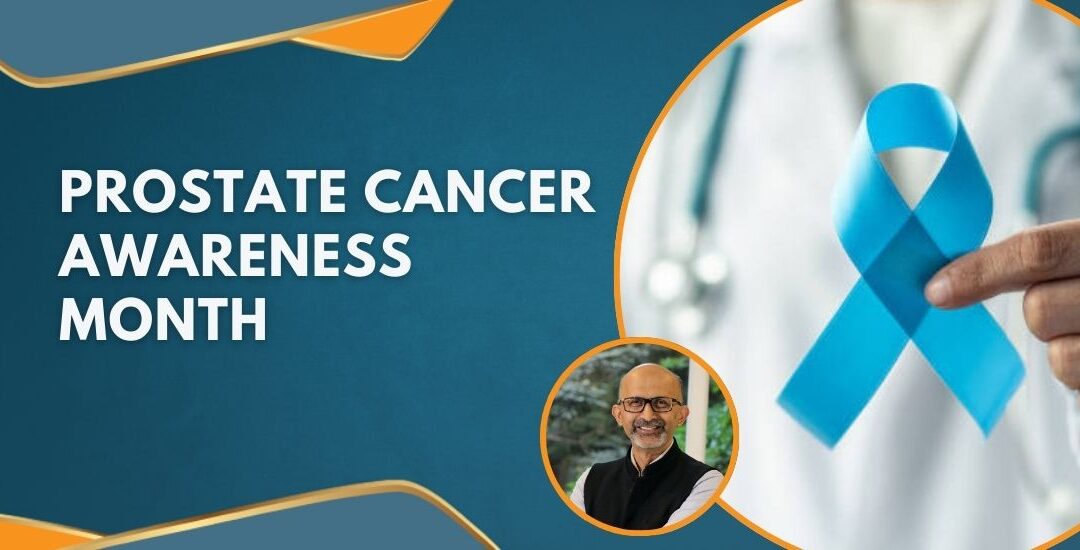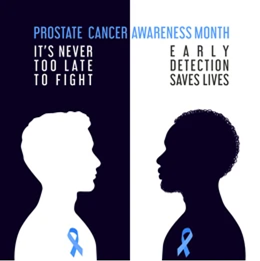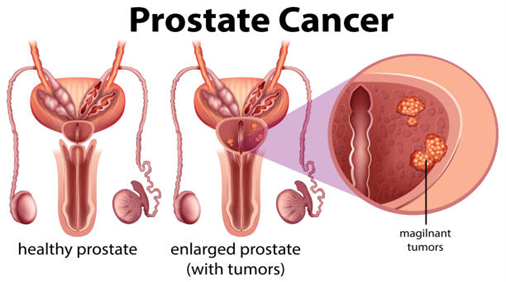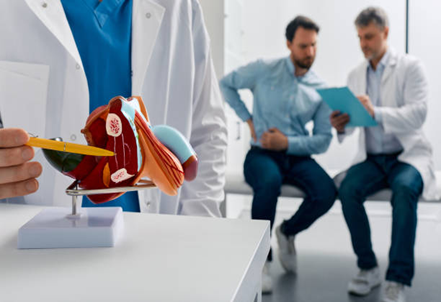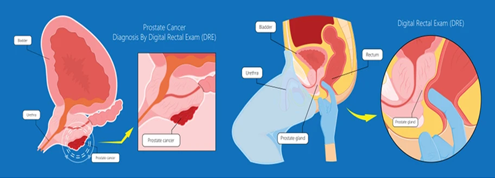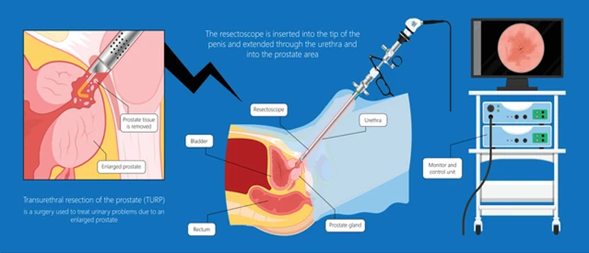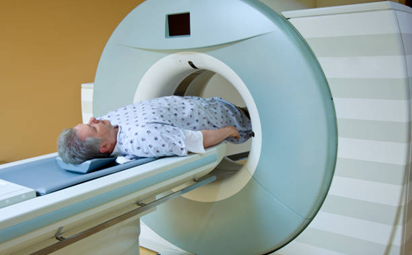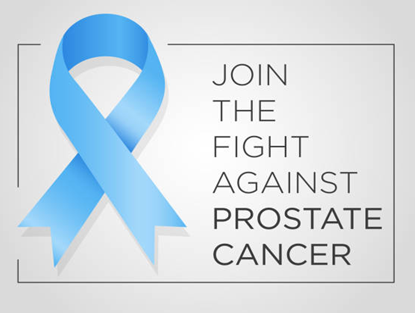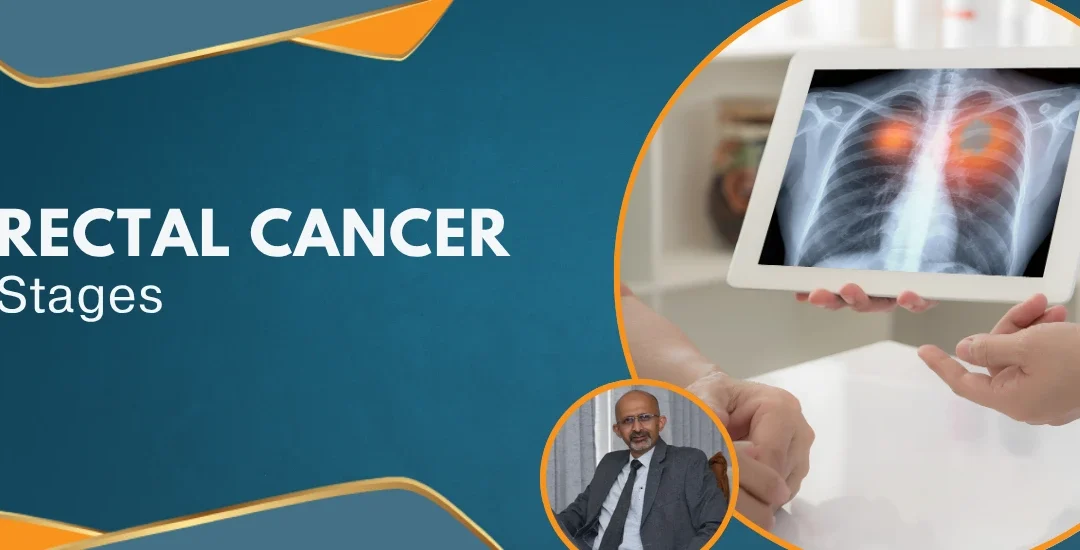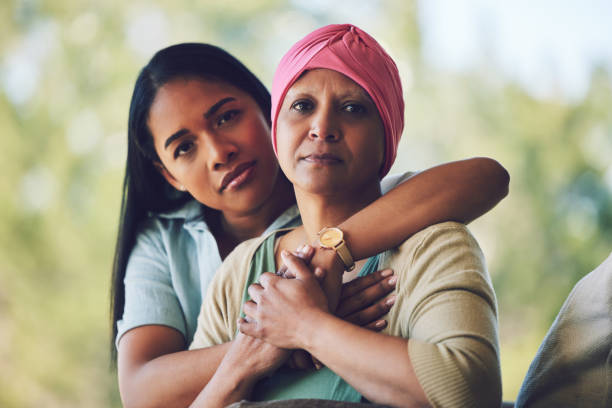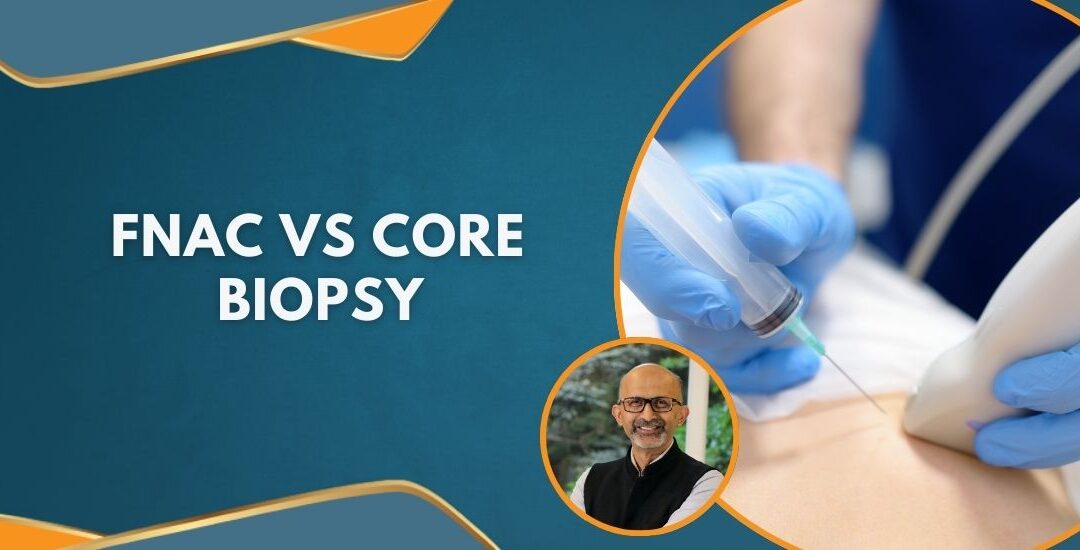
FNAC vs Core Biopsy: Understanding the Difference in Cancer Diagnosis
Accurate testing and confirmation are essential for detecting and diagnosing cancer. Dr. Sandeep Nayak, an experienced oncologist in Bangalore, often emphasizes that the right diagnostic approach helps not only confirm the presence of cancer but also determine its exact type, crucial for planning treatment. Two widely used methods for this are Fine Needle Aspiration Cytology (FNAC) and core biopsy. These techniques are used for suspected cancers in the breast, lymph nodes, thyroid, lung, and other areas.
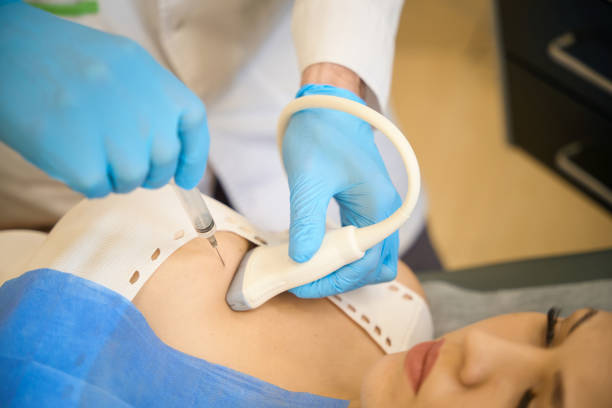
What is FNAC?
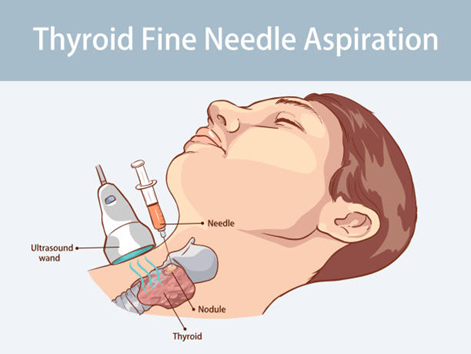
FNAC is a quick and minimally invasive test used to check for cancer cells. A very thin needle is inserted into the suspicious area to collect a small sample of cells. These cells are then spread on a glass slide and examined by a pathologist.
FNAC is often used as an initial screening method because it is:
- Quick and relatively painless
- Requires no stitches or significant recovery time
- Often performed in an outpatient setting
However, since FNAC collects only a few cells, it may not always provide enough information about the type or stage of cancer.
What is Core Biopsy?
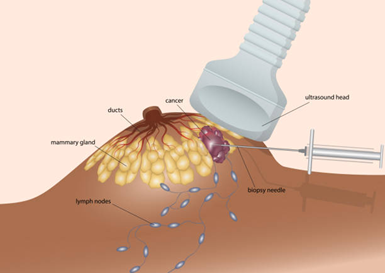
A core needle biopsy, sometimes called a Tru-Cut biopsy, involves using a slightly larger needle to remove a small cylinder of tissue from the lump. The sample is about the size of a pencil lead or pen nib and contains intact tissue architecture.
This provides pathologists with more material for testing, which allows for:
- Confirmation of the diagnosis
- Determining the type and grade of the tumor
- Performing additional molecular or receptor studies that help plan treatment
Because of these advantages, core biopsy is commonly preferred in many cancer diagnosis protocols, though the choice depends on the clinical situation.
“FNAC vs Core Biopsy isn’t just a technical choice—it’s about ensuring we get the right information at the right time to guide effective treatment,” says Dr. Nayak.
FNAC vs Core Biopsy: Key Differences
While both procedures help detect cancer, their scope and accuracy differ significantly:
|
Aspect |
FNAC |
Core Biopsy |
|
Sample type |
Cells only |
Tissue sample |
|
Needle size |
Thin, fine needle |
Larger, hollow needle |
|
Information provided |
Basic confirmation of abnormal cells |
Detailed tumor type, grade, and molecular profile |
|
Accuracy |
Can sometimes miss cancer (false negatives) |
Higher accuracy for diagnosis and tumor typing |
|
Procedure time |
Shorter |
Slightly longer |
|
Recovery |
Minimal |
Minimal to mild soreness |
Advantages & Disadvantages

FNAC and core biopsy come with their own set of benefits and drawbacks.
FNAC
Advantages
- Minimally invasive: The procedure is quick and usually well-tolerated.
- Lower cost: FNAC tends to be less expensive than a core biopsy.
- Quick results: The procedure can be done in a shorter time, and the results are often available relatively quickly.
Disadvantages
- Inaccurate results: FNAC has a higher chance of missing cancerous cells or providing inconclusive results.
- Limited information: It does not allow for detailed molecular analysis.
Core Biopsy
Advantages
- Accurate diagnosis: Core biopsy provides a larger sample, which improves diagnostic accuracy.
- Advanced testing: Enables the use of genetic and molecular testing to inform personalized treatment plans.
- More comprehensive information: Can determine tumor subtypes and other vital details that impact treatment.
Disadvantages
- Invasiveness: Although minimally invasive, core biopsy requires a larger needle and may involve more discomfort.
- Longer recovery: The procedure may cause some swelling, bruising, and soreness that can take longer to heal compared to FNAC.
Which Test is More Accurate?
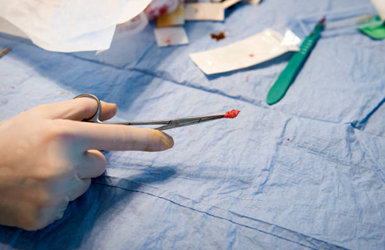
FNAC is helpful as a preliminary test but has limitations in accuracy, especially when the cancer is small or located deep within the tissue. As Dr. Nayak explains, a core biopsy provides a more comprehensive sample, making it more reliable for diagnosis and treatment planning. If chemotherapy or targeted therapy is needed before surgery, a core biopsy is usually the test of choice.
When is FNAC Recommended?
FNAC may be suggested when:
- The lump is easily accessible and superficial.
- A quick, preliminary result is needed.
- The risk of cancer is considered low.
- The patient cannot undergo a more invasive test immediately.
When is Core Biopsy Recommended?
A core biopsy is preferred when:
- Cancer is strongly suspected based on imaging or examination.
- Detailed tumor profiling is required for treatment planning.
- The patient may need chemotherapy before surgery (neoadjuvant therapy).
- FNAC results are inconclusive or contradictory.
Risks & Recovery

FNAC Risks:
- Slight bleeding
- Temporary discomfort
Core Biopsy Risks:
- Mild swelling or bruising at the site
- Rare chance of infection
Recovery Tips:
- Apply gentle pressure or a cold pack to reduce swelling
- Keep the biopsy site clean and dry as advised
- Avoid strenuous activity for 24 hours
Recovery from a core biopsy might take longer than FNAC due to the larger needle and more significant tissue removal, but most patients recover within a few days.

